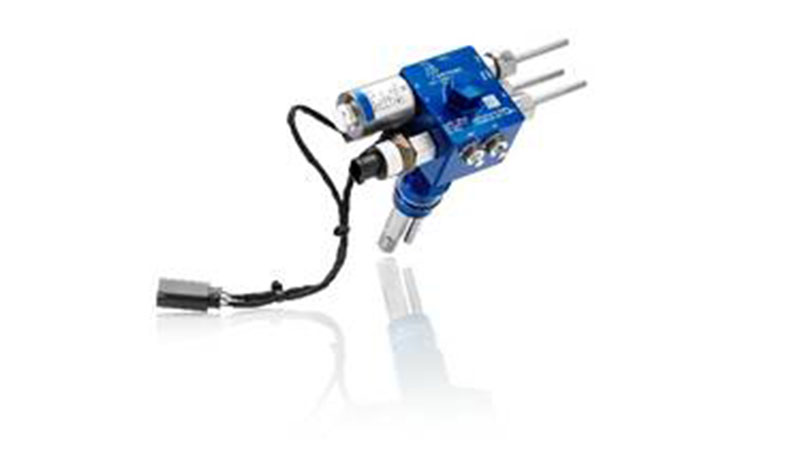Fuel cell technology makes an important contribution to achieving an emission-free future. Hydrogen can be used in both mobile and stationary applications and in this way contributes significantly to the energy transition. The fuel cell has advantages over electric mobility: the smaller battery of the Fuel Cell Electric Vehicles (FCEV) allows a greater range with a higher payload compared to Battery Electric Vehicles (BEV). Another advantage is the much shorter refuelling time for FCEVs. Not only because of these advantages does the market for FCEVs offer great growth potential – Asia and the USA in particular will rely on fuel cell technology in the future. For example, both China and California are aiming to have one million FCEVs in their fleets by 2030.
To optimally utilise the advantages of a fuel cell drive, among other things, a reliable supply of hydrogen during operation and the shortest possible refuelling times are necessary. The valve attached to the H2 tank plays an important role here. With the specially developed On Tank Valve (OTV), Poppe + Potthoff offers a new solution for use on the tank in mobile and stationary H2 systems. The OTV can be attached to individual tanks or to a group of tanks via a distribution rail.
Depending on the system configuration, the OTV thus enables serial and parallel filling of the tank cylinders. The innovative flow guidance reduces pressure losses and enables a higher refuelling speed compared to the standard of 60g/s discussed in the GTR13 standard for refuelling passenger cars. This brings advantages, especially when used in commercial vehicles. In addition to the shorter refuelling time, weight optimisation of the modular OTV body is also one of the goals in the development of the OTV. Thus, low weight of less than 1300g and a compact design of 177mm diameter including the attachment of a solenoid valve could be achieved.
The modular design of the OTV allows easy integration of additional components into the component. To enable good use, Poppe + Potthoff designed the OTV to be as user-friendly as possible. The component has a central connection for filling and removal, as well as an optional connection e.g. a Middle TPRD, while all cable outlets are bundled on one side. This design allows for easier assembly.


